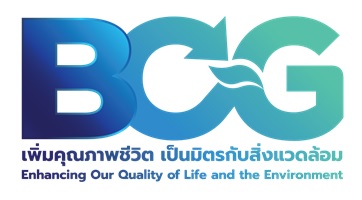Every year, significant amount of shell waste is generated by food and jewelry industries. As shells are composed of 95% calcium carbonate, this waste represents an interesting source of calcium carbonate that has a wide range of industrial applications.
A researcher of NANOTEC-NSTDA has developed a low-energy, green process to transform shell waste into bio-calcium carbonate for cosmeceutical application, with research funding obtained from the National Research Council of Thailand (NRCT).

NANOTEC researcher Dr. Chutiparn Lertvachirapaiboon explained that this innovation originated from his PhD dissertation investigating optical properties of nacre – a pearly inner layer of mussel shells. The PhD study led to the development of a process to prepare bio-calcium carbonate from mussel shell without altering the compound structure. The extracted calcium carbonate is in an aragonite form – hexagonal crystals with 5-10 micron in size and 200-500 nm in thickness – with similar chemical properties to calcium carbonate obtained from limestone.

The NRCT funding enabled Dr. Chutiparn to improve the valorization process to be more energy efficient and expand to an industrial scale, as well as developing industrial applications of bio-calcium carbonate, particularly in cosmeceutical products. Bio-calcium carbonate is an eco-friendly replacement for microplastics in face scrubs. Aragonistic calcium carbonate has a perfect size and shape to be converted to hydroxyapatite - an active ingredient in toothpaste that helps remineralize tooth enamel. Furthermore, this natural calcium carbonate has been tested to meet the industrial standards to be used as an ingredient in cosmeceutical products.
Apart from cosmeceutical application, the research team has developed processes to produce aragonistic calcium carbonate for other applications, including plastic and paper industries. Calcium carbonate is used as a filler in the plastics industry to replace a part of polymer, and therefore lowering the production cost. More amount of filler used will help save cost but also make finished products appear unpleasantly cloudy. Aragonite filler scatters light more effectively, and therefore can be used in a larger amount without clouding finished products. Calcium carbonate is also used in paper coating. As the new EU regulation requires paper coating to be 100% biodegradable, this bio-calcium carbonate can help Thai paper industry meet this new standard.
Bio-calcium carbonate from mussel shells is a game changer for upcycling shell waste to benefit a variety of industries. It helps strengthen industrial competitiveness without negative impacts on the environment.









